Aggiornato il 21 Luglio 2025
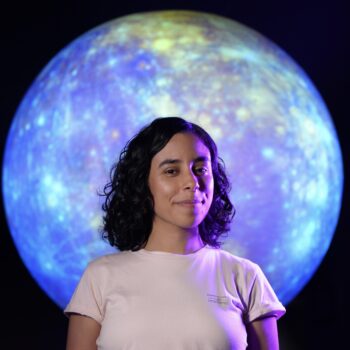
After a few months of silence, Universe World is back! This month we travel to South America, in particular to Colombia, and we celebrate the 100th birthday of the planetarium with a special visit to the Medellín Planetarium, where we meet astronomer, science communicator and embroidery-enthusiast Michelle Mora.
Tell us about yourself: your current job, your education and career path, what led you here?
I am an astronomy professional at the Medellín Planetarium in Colombia, where I have worked for nearly three years. I am originally from Venezuela, I moved to Medellín in 2016 and began studying Astronomy at the University of Antioquia. In the last couple of semesters, I developed an interest in science communication. I also learned how to embroider and started creating pieces with astronomy themes during that time. The Planetarium expressed interest in this project and offered me a space for an embroidery club, eventually leading me to my current job. Now, I engage in astronomy outreach and produce educational content for school teachers.
Astronomy-themed embroidery is quite an original hobby, and you even turned into a public engagement initiative. Congratulations! How did that happen?
In 2020, I started embroidering astronomy concepts more frequently, and I created an Instagram page to show them. Then, the Medellín Planetarium contacted me to give a workshop on how to cross-stitch the Earth and the M87 galaxy. This turned out great, so we developed an Astronomy embroidery club called “Between Stitches and Stars”, where we could talk about astronomy while embroidering.
The first project we made was dedicated to the two hemispheres of the celestial sphere, tracing with needle and thread each constellation and joining them as a puzzle. We were 30 people who meticulously embroidered the mythology figures, animals, and objects in the sky. Through conversations about stellar magnitudes and employing diverse embroidery techniques for Messier objects, we created two 1.5-meter frames, depicting both hemispheres.
In the second project, we chose to embroider women who have been impactful in the development of astronomy, creating a composition highlighting their work. The result was unique banner-style compositions displayed at the Planetarium, commemorating the International Day of Women and Girls in Science. Our last project was called “Landscapes of the Solar System”, where we showcased interesting and unusual views of each planet, and it’s currently displayed at the Planetarium.
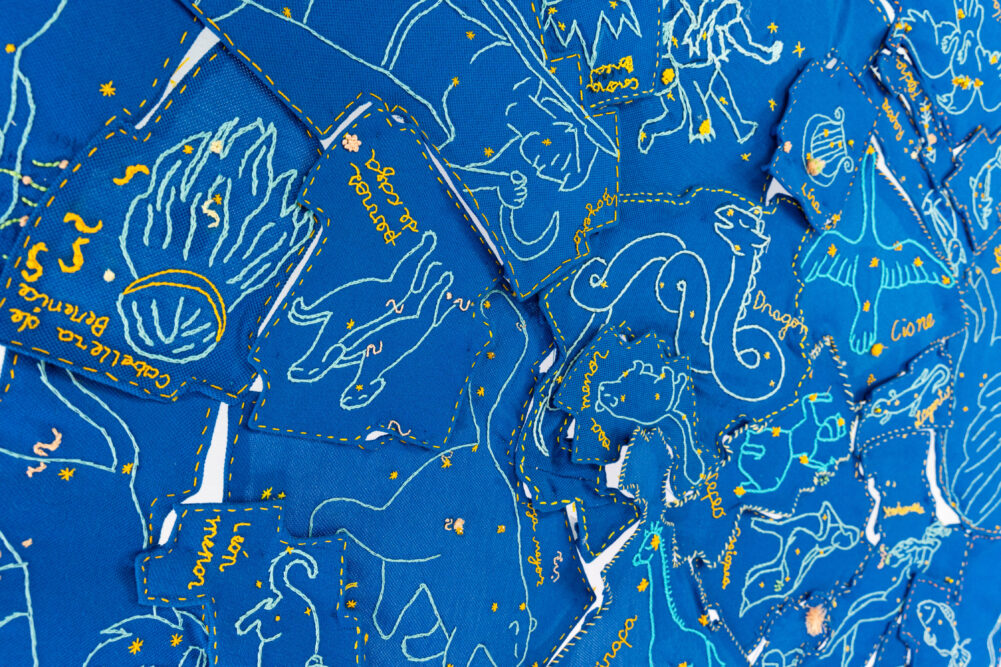
These craftwork are marvellous. What do you think contributed to making this project a success?
I think the interdisciplinary connection between astronomy and embroidery captivated people drawn to experience science through art. With each embroidery, participants engaged with astronomy uniquely and creatively, crafting tangible representations of celestial objects and concepts using this artistic technique. Moreover, the club served as a vibrant hub for community building where we shared our enthusiasm and knowledge for both astronomy and embroidery through meaningful conversations. These large-scale projects where the final result depended on the months-long work of each participant, also promoted a strong sense of companionship. This ingenious approach I think democratized access to science and nurtured creativity, collaboration, and a sense of belonging among its participants.
Can you tell our readers a bit about the context of astronomy and space science in Colombia?
Astronomy and space science in Colombia are rapidly developing because of academic research and public outreach. Today, the Astronomy programmes available in Medellín and other well-known universities in the country are encouraging astrophysics research and space science, often collaborating with international observatories and universities. In the past few years, there has also been an increase in the number of Planetaria in the country, demonstrating the capabilities of these spaces in promoting science.
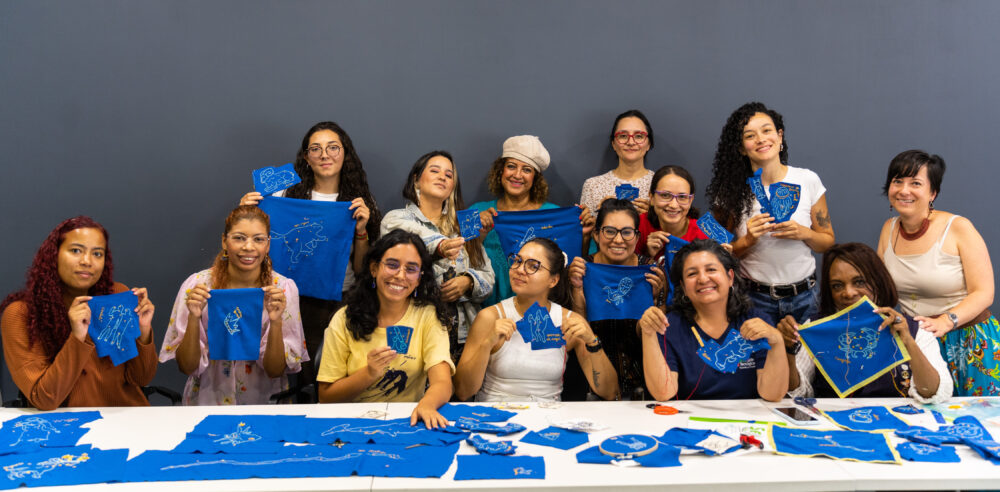
What are the main activities of the Medellín Planetarium?
In the Planetarium, we have interactive exhibitions on astronomy and numerous free outreach programs for science and cultural engagement. We are now offering a new immersive dome show made by Parque Explora/Planetario de Medellín and Double Dome Films. It’s called “Animales Celestes”, a beautiful and moving show that reimagines new constellations based on the biodiversity of Colombia and some endangered species. We also have special school visits, with entertaining and interesting experimental activities on a distinct theme: which this year will be “The senses and astronomy”. Additionally, the planetarium offers cultural programs connected to our museum, making it a key institution for inspiring curiosity and providing both learning and entertainment.
After 100 years since the first planetarium public projection in 1925, planetaria are still incredibly popular. Why do you think so?
Planetaria can uniquely combine education, entertainment, and wonder, offering an immersive experience that no other medium can fully replicate. Last year was the 40th anniversary of our Planetarium, and it was evident how these kinds of places can impact a city. The Planetarium has offered fascinating stories about the sky, leaving a memory on the visitors for years and inspiring others to pursue a career in science.
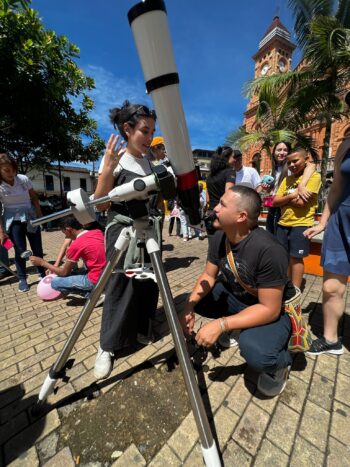
How has the planetarium concept evolved over this past century and what is it that still captivates so many members of the public?
What began with mechanical star projectors and sky shows, now has evolved immensely with digital projectors. Planetaria can take you to places you couldn’t imagine existed, and can now be a stage to explore not just astronomy but any discipline, raising so many emotions in the public. They keep captivating audiences of all ages and all kinds of backgrounds, making planetaria not only scientifically but culturally impactful.
Tell us your typical day working at the planetarium…
On a typical day at the Planetarium, I can start the day planning an upcoming outreach event. It can be a live dome show or a programme with school teachers. I read about the subject I want to talk about, and I create an outline of what I want to show and the questions I want to encourage. I always try to look for connections between science and art that can be useful and inspiring for these programmes. In the afternoon, I stay in the library for a while collaborating with colleagues to design new content, and I can have meetings to plan astronomy courses or special events for the next few months. If it’s a Friday, I sometimes end my day with a stargazing night with the public.
What are the most exciting and most difficult parts in your job?
For me, one of the most exciting parts of my work is seeing schools visit the Planetarium. Lots of kids running around, asking questions, and being so enthusiastic to be in this place. Some of my favourite memories as a kid were in a museum, so it makes me happy I get to work in one as an adult. My office is right below the dome, so I usually hear how they react to the shows and it’s wonderful. I also have enjoyed learning from my coworkers to tell stories with a unique point of view. I think that they have taught me to look for the unusual connections with science, the grandness of our planet and its diversity, and the stories that make us more similar than we are different.
One of the difficult parts of my job is handling the socioeconomic and educational disparities in the schools of the Planetarium’s teachers community. They are a group of 30 teachers who actively learn about astronomy to use it as a pedagogical tool in their classrooms. However, each one of them has a completely different background and school context, so trying to come to agreements for the educational content we create can sometimes be challenging.
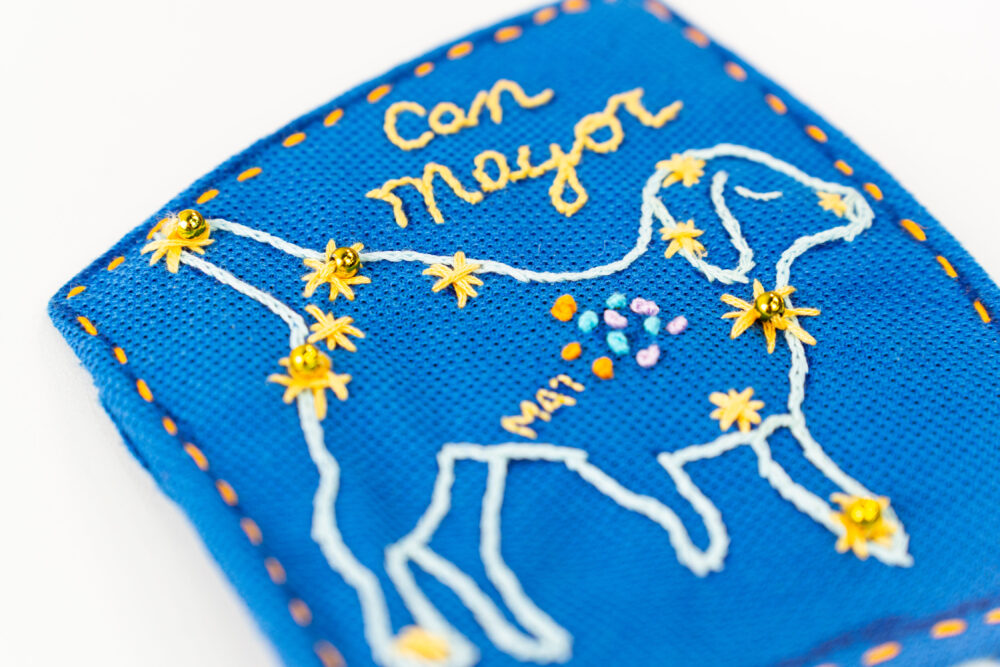
Talking about challenges, what would you say are the major challenges for a science communicator and educator today, in Colombia?
We usually have limited funding for science outreach programs. This creates another difficulty: jobs for science communicators can be limited, especially now that many scientists are considering this career path because of social media.
Another significant challenge is bridging the gap between science and diverse audiences, especially in a country with vast socioeconomic and educational disparities. Rural areas and people with disabilities have been a target audience for the past couple of years to help tackle this inequality.
And globally? Are the challenges different from those that you experience locally?
Nowadays, social media is a tool that has presented us with the challenge of reaching larger and much more diverse audiences than ever before. Content designed for social media by science communicators often faces an imbalanced competition with the spread of misinformation that goes viral through the inner workings of internet algorithms. On top of this, the amount of information that users are exposed to daily ends up being an obstacle to the reach of new content. Science communication must adapt to a public that is overwhelmed with information and is getting used to content lasting a few tens of seconds at the most.
Another significant issue is addressing the accessibility of science communication, ensuring that it reaches diverse audiences across cultural, linguistic, and socioeconomic boundaries and that the opportunities for science communicators can be given with this in mind. A more diverse outreach cannot be achieved without a more diverse community of science communicators.
Are there any authors, books, people or special events that influenced you along your journey?
The Marginalian has always been one of my favorite blogs when I want to look up moving stories about science and art. I especially recommend this article, which has become one of my main references in the Club, about the embroideries of my favorite astronomer, Cecilia Payne-Gaposchkin. I also recommend the series of books in Spanish El universo según Carlota by Teresa Paneque. She is a wonderful science communicator and her books are a great example of that.


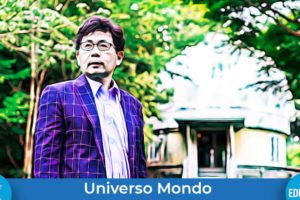
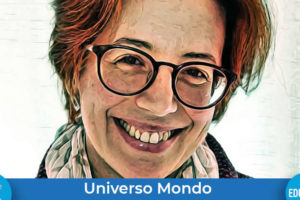
Add Comment